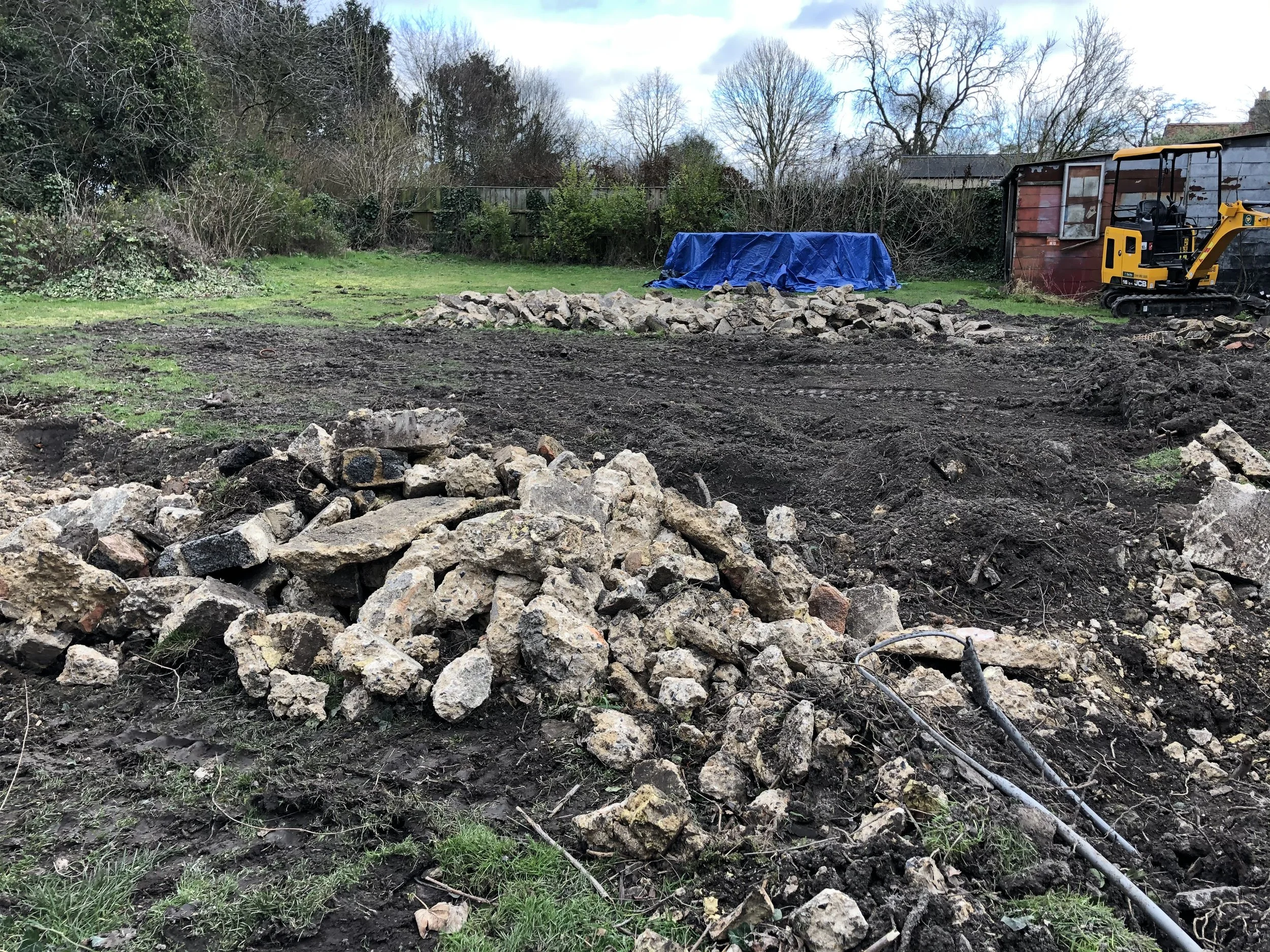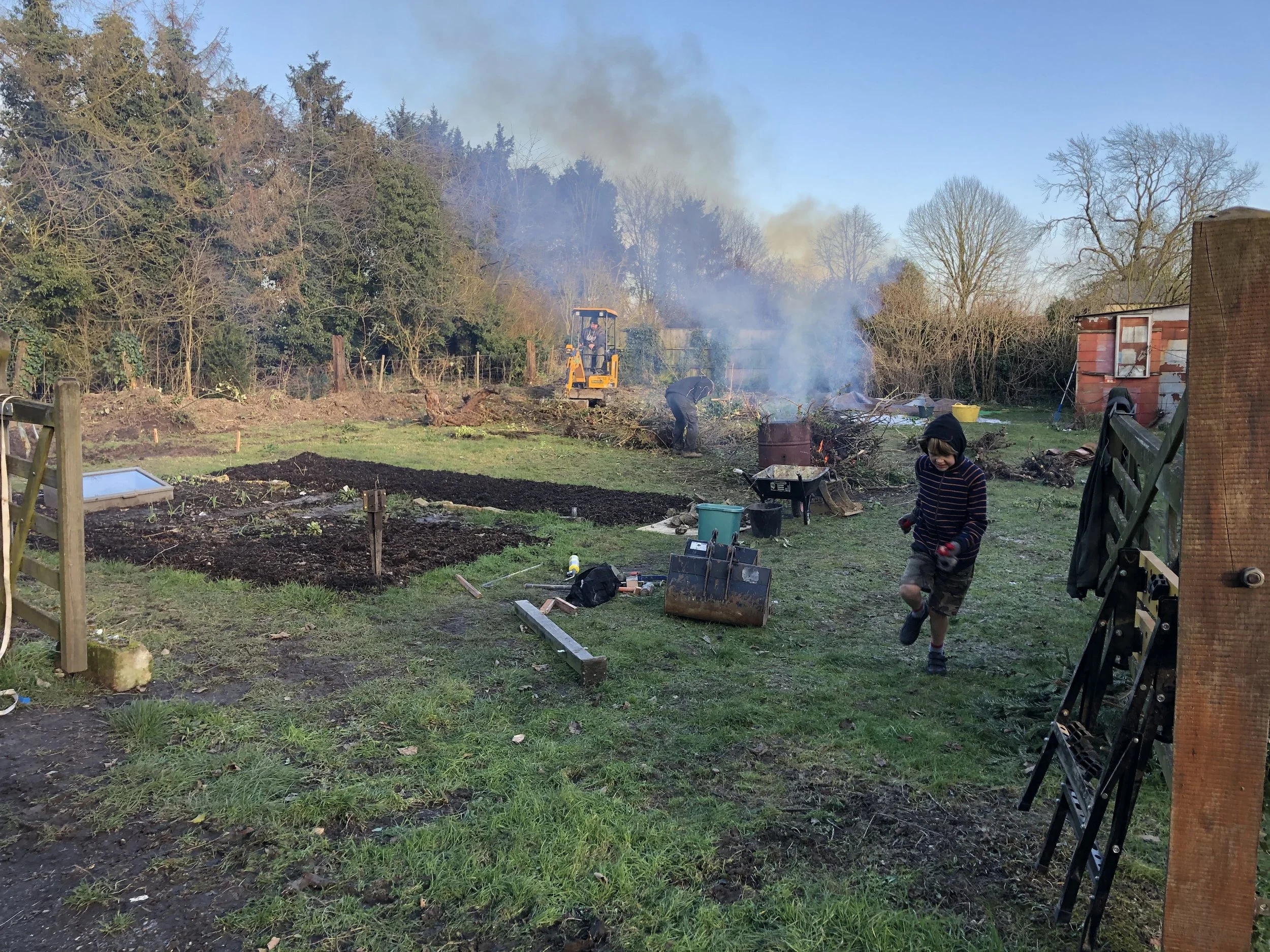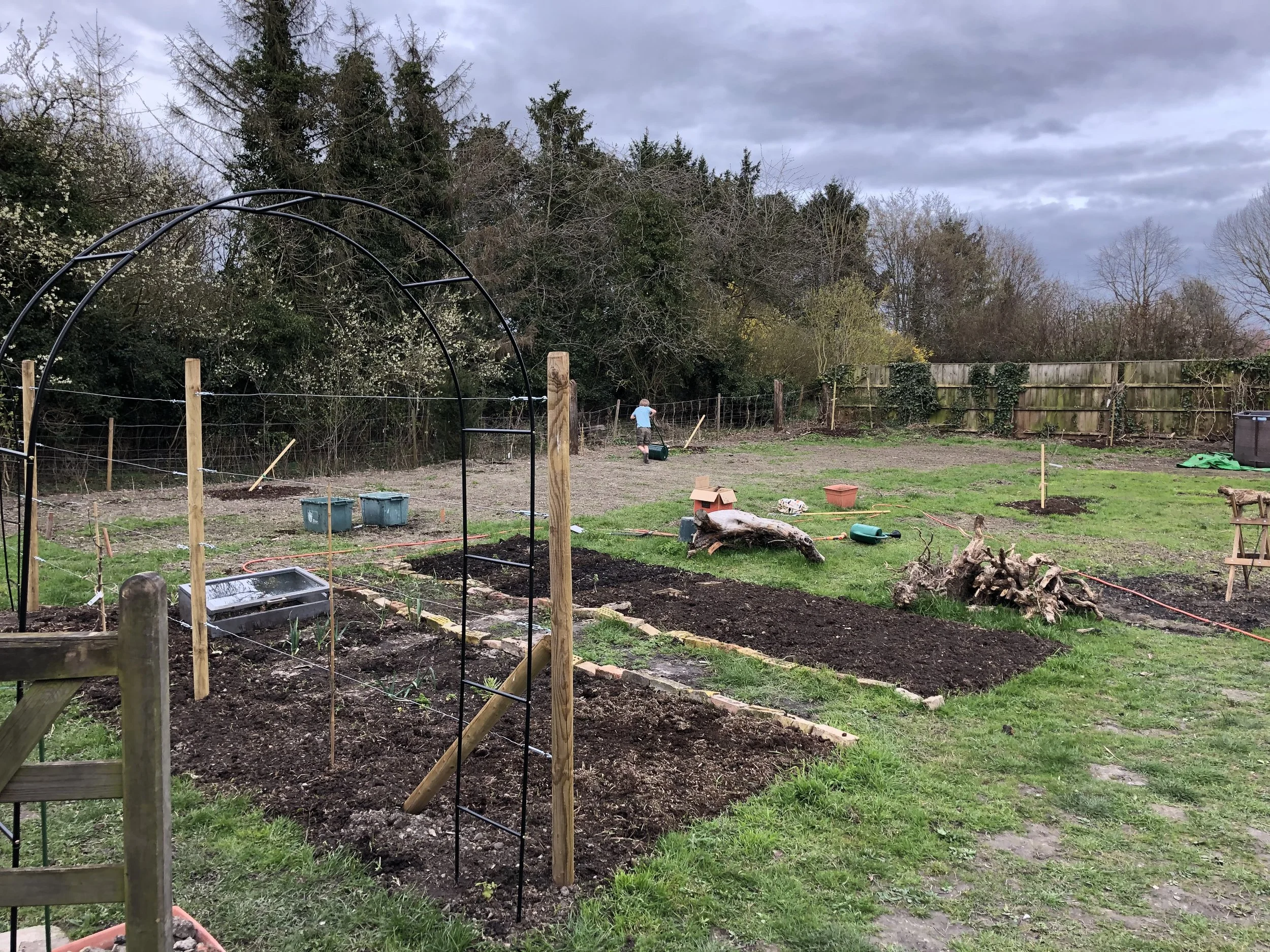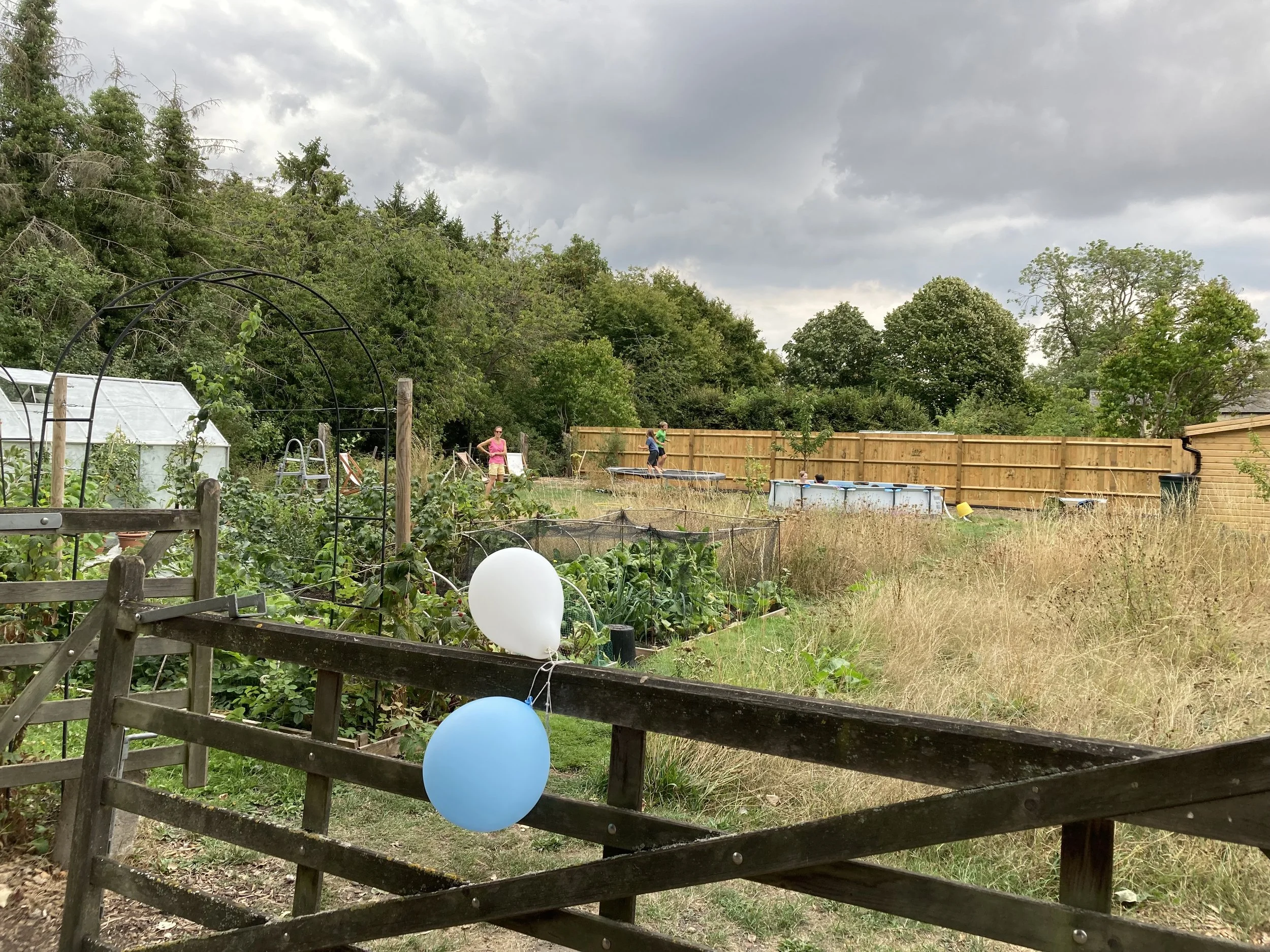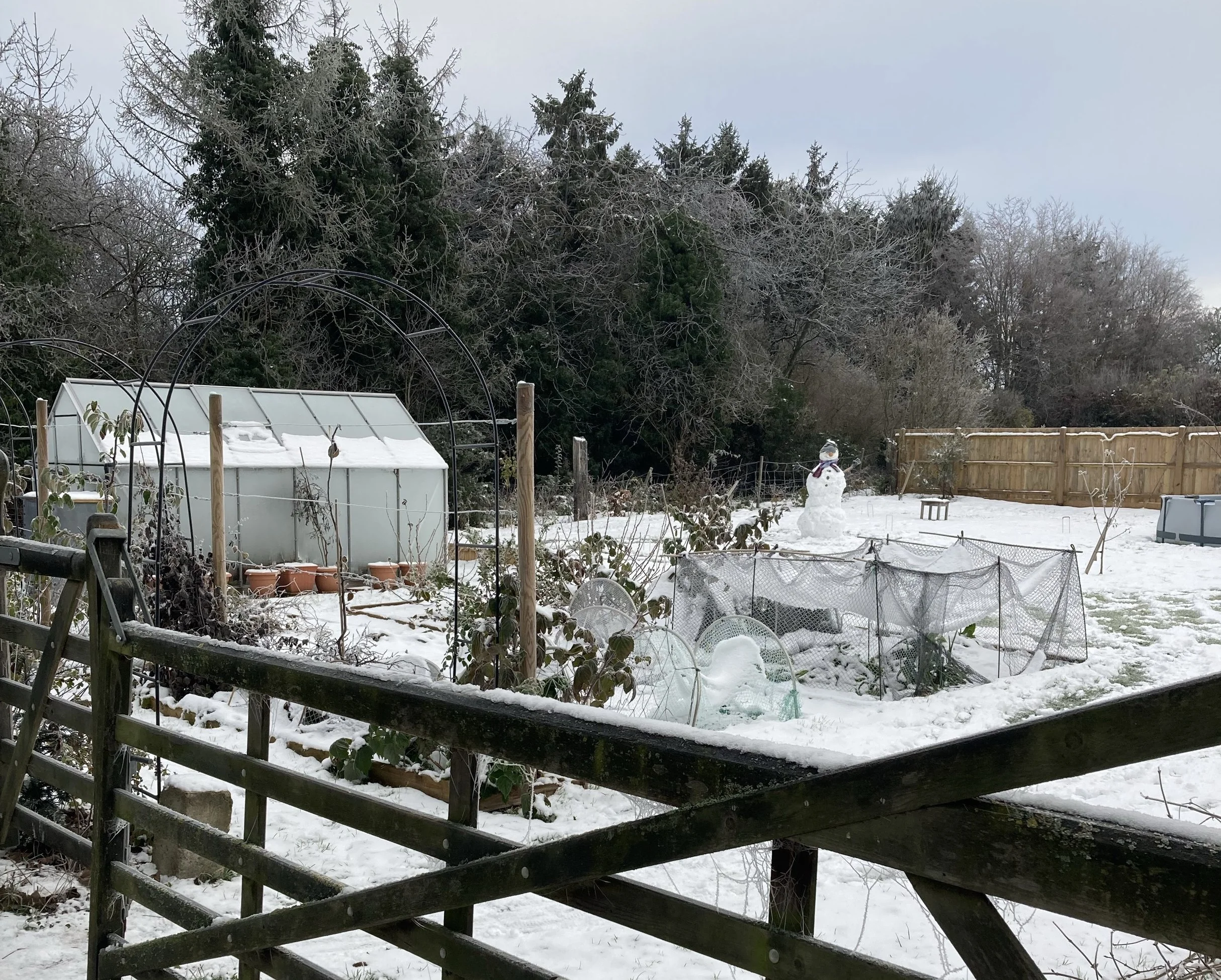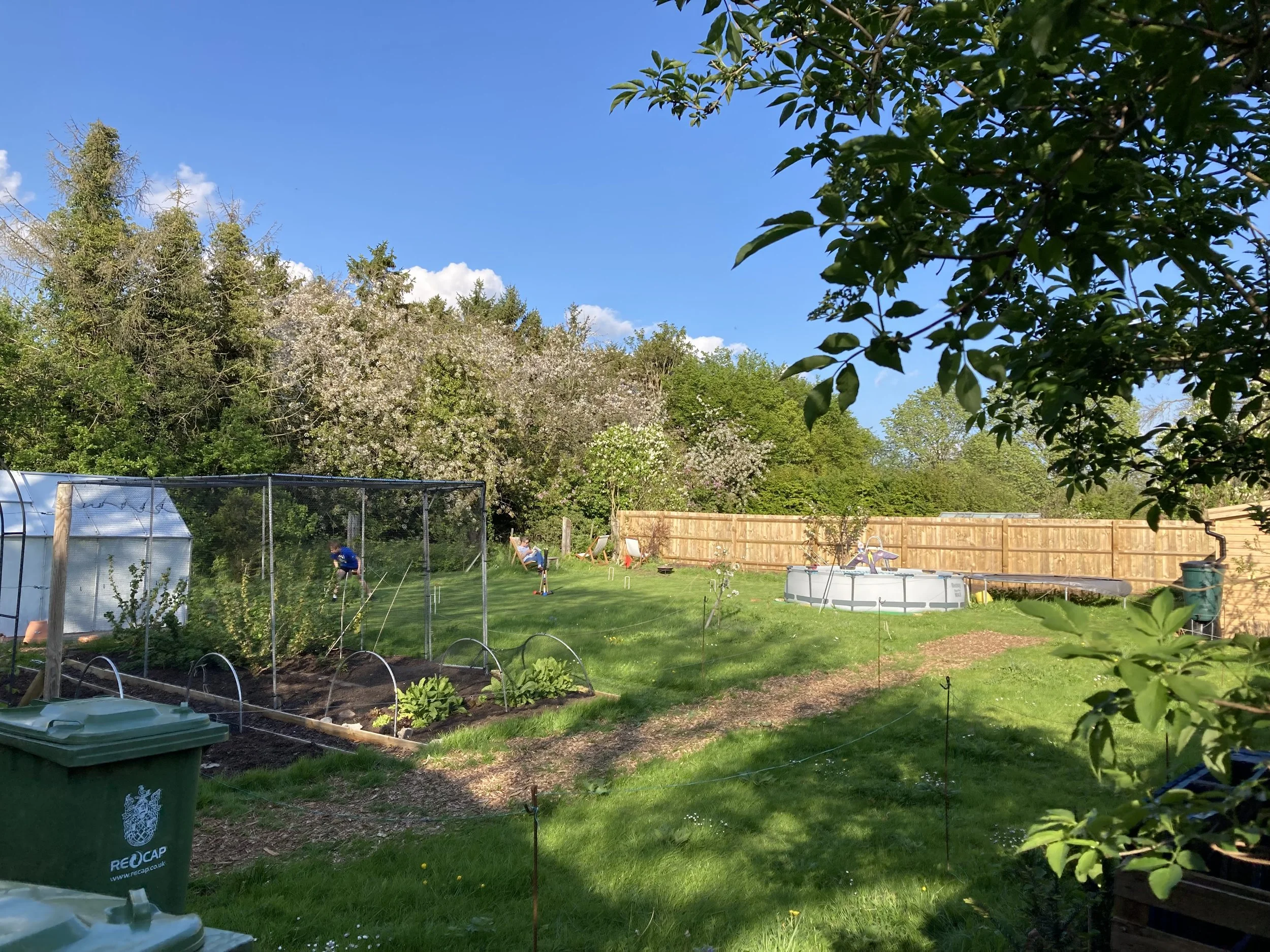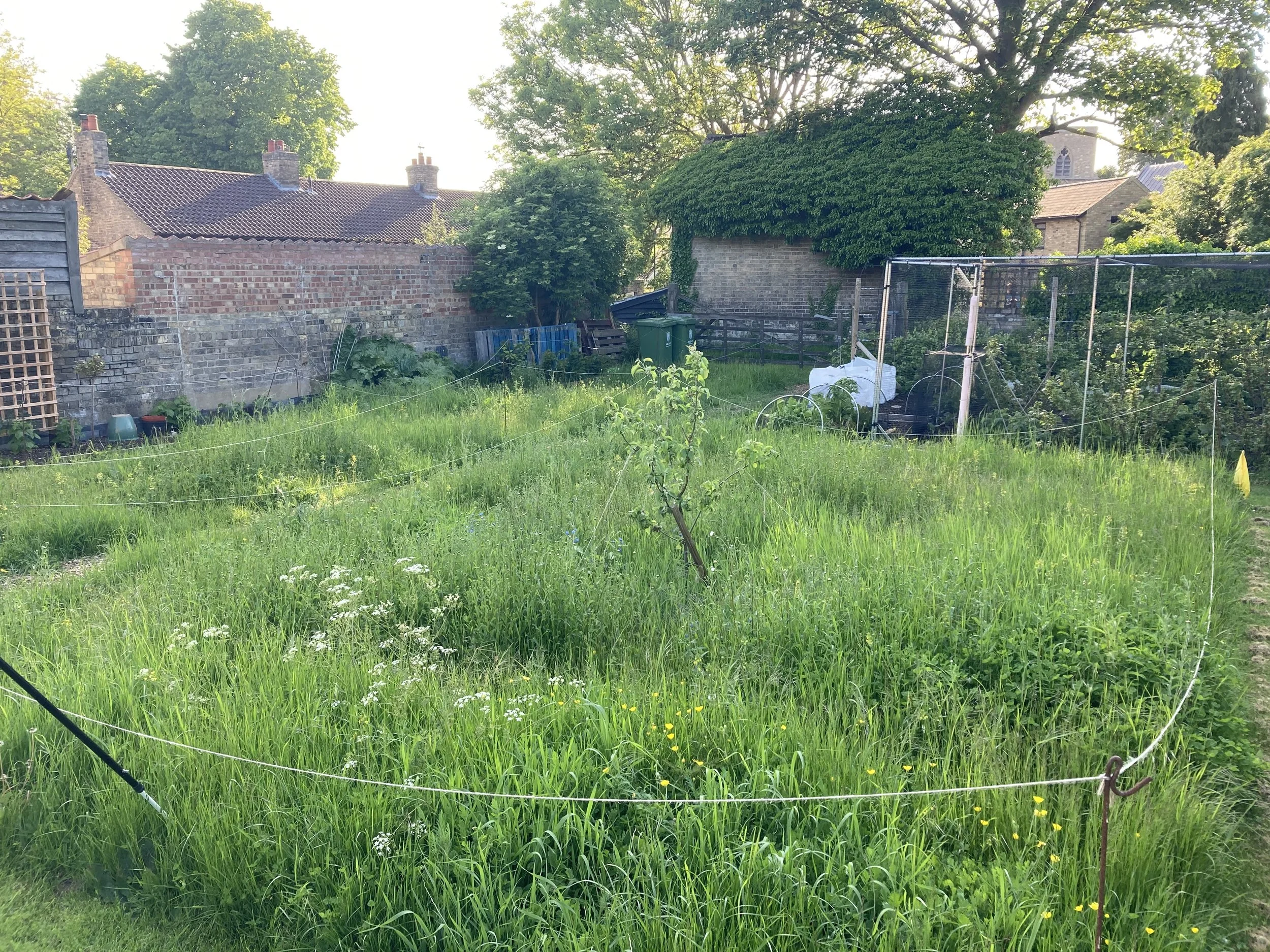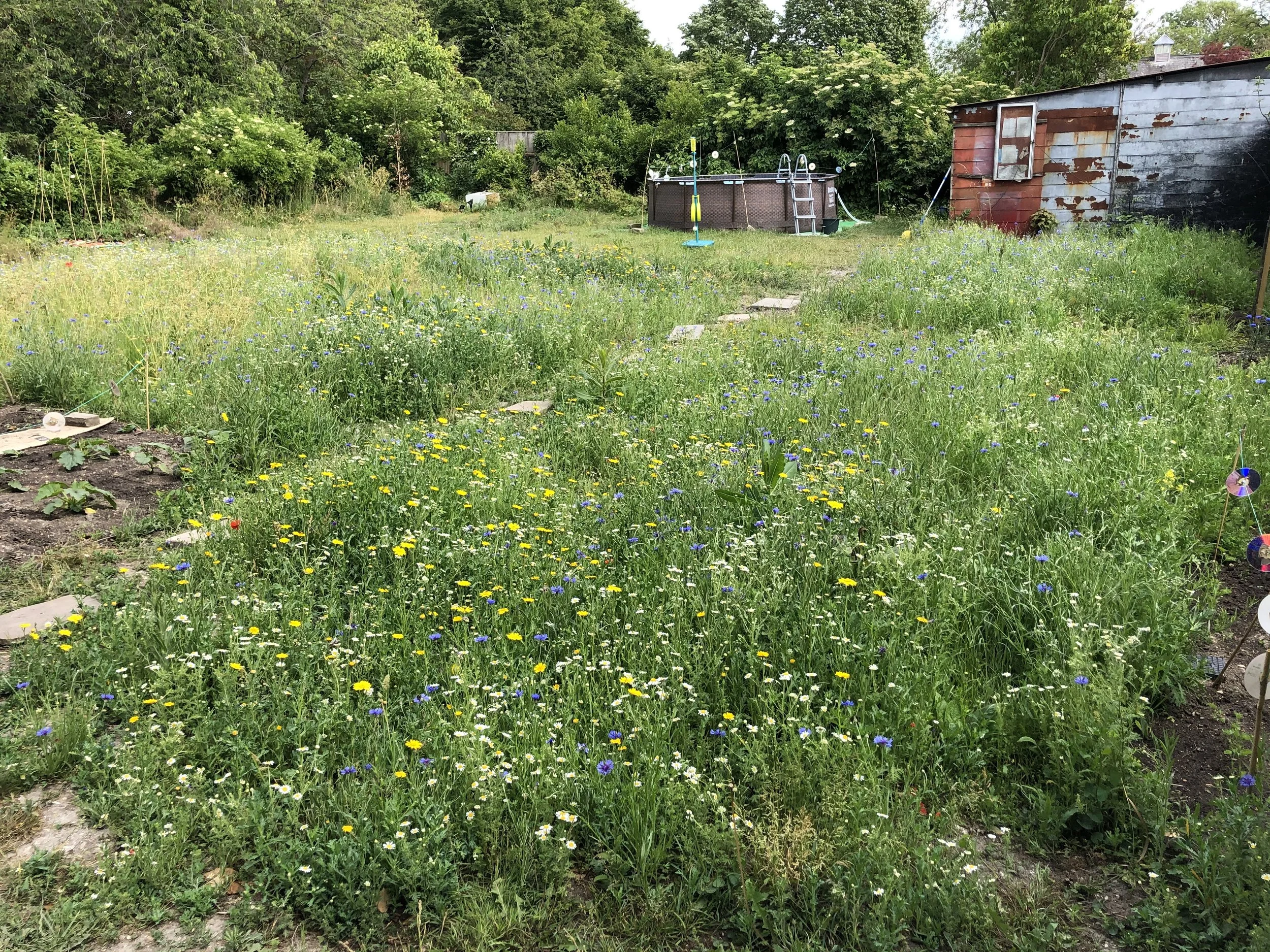
In the priest’s garden: Machine, myth and local landscape regeneration
05/11/2023
Joseph Quash
Despite recent rewilding efforts and rus in urbe city planning gaining momentum, it remains that our quotidian observations relating to our natural environments are, more often than not, concerned with our accelerating ruination of them. During a module in my second year at university, I was introduced to the concept of the Anthropocene: our age, defined by humanity's dominating influence on climate and environment, leading to overwhelmingly negative impacts through global emissions, resource over-extraction and abuse of wildlife.
A small but consistent element of my life, however, has taken the opposite course. A few years ago my father, a clergyman, bought the piece of land behind our house from a neighbour who had chosen to up sticks in favour of a pastoral retirement in northern Kefalonia. He bought this land (“the Field”) initially not out of any desire to cultivate an Edenic pocket in his back yard, but rather to prevent any prospective builder from snapping it up and constructing a large house that would inevitably ‘ruin the view’ and ‘block all the light from reaching the kitchen’. This twenty square metre plot, however, has become far more than merely a protective patch warding off property prospectors, and has instead become a thriving enclave of plant and animal life, and a passion project for my father that has changed the family’s outlook on their impact on their environments, both immediate and further afield.
Figure 1: Destroying urban foundations
In 'The Lamentations of Round-Oak Waters' by John Clare, the speaker mourns the bastardisation of a local place of beauty. He recalls “How it had us’d to look”, remembering “what trees my banks did crown” and “What Willows flourishd here”, using regal imagery to convey the area’s previous majesty. This stands in stark contrast to its present subjugated and commercialised state, with Clare asserting that the land has been “turned upside down” due to the modern infrastructure of “post and rails” that has been aggressively installed. It is a juxtaposition of the place’s previous idyll, and present ruination.
This sits in diametric opposition to the process that the Field has undergone. The situation in Figure 1 may look bleak, but this was the first necessary step in returning the land to a position where it could thrive; this meant removing the concrete and piping that had been embedded in the ground years prior, culling the long dead bushes to make space for fresh shrubs, and the levelling of the old carport in which a hungry four-by-four had once slumbered – activities akin to the agonising extraction of shrapnel from a blast victim to aid their ultimate recovery. This short-term demolition (un)paved the way for my father's emerging long-term vision.
Figure 2: The machine in our garden
I have come home to visit my father for Christmas, and I go to inspect the Field. Leo Marx, in his book The Machine in the Garden, says of the ‘Sleepy Hollow’ motif that it is a microcosm of “the contrast between two worlds, one of rural peace and one of urban power”: an eerie, liminal space existing in a precarious, unsettled environment. There is something of the folkloric Sleepy Hollow in this place, I think, especially in winter, when the night draws in and the forest beyond the Field’s boundary darkens, and comes alive. It is, as Nathaniel Hawthorne writes, “a shallow space scooped out among the woods”, one that has been cut ragged by years of neglect, but must endure one last day of industrial savagery yet.
In Marx’s view, “...the machine is made to appear with startling suddenness. Sometimes it abruptly enters a happy valley, at others a traveller suddenly comes upon it”. The machine we see in Figure 2, although apparently ripping up the landscape and belching smoke, belies its constructive ends. Marx’s machine is the amalgamation of encroaching industry and careless urbanisation, manifested here in the piles of waste and wire hidden beneath the sullied ground, the cable fence that enmeshes gnarled, dead roots. There was nothing sudden about this machine – it’s the result of years of mistreatment. The digger, meanwhile, although a symbol of urban power, becomes a tool for healing; the old vegetation is burnt to fertilise the soil – the balance between the two worlds is shifting.
Figure 3: Autumn
Figure 5: Spring
Figure 4: Winter
Figure 6: Summer
The fledgling allotment seen in Figure 2 grows in efficiency and plenitude over the next few years. My father is outside constantly, mowing and sowing, and when it gets too dark, too cold, he sits by the Aga, writing up a crop rotation in a green leather notebook I gifted him: 'Notes from the Allotment'. Cultivation of land is a focal point in discussions about changing environments. Hawthorne wrote in his journal that Sleepy Hollow is a “thriving field of Indian corn, now in its most perfect growth”. It is a distinctively American assessment, a people defined by expedition, enterprise, agricultural and industrial might. Clare’s judgement is very different. He identifies what he sees as agrarian butchery of natural wonder for commercial ends later in 'Lamentations': “‘Dire nakedness oer all prevails/’Yon fallows bare and brown… ‘The greens, the Meadows & the moors/ Are all cut up & done”. Hawthorne and Clare’s contrasting language regarding the impact of commercial agriculture highlight a fundamental rift in worldview. Those same plough furrows that grid the Great Plains and speak to the mastery of nature itself in the Hawthornian view are an aesthetic and a moral stain in the Clarite.
In Discovering the Vernacular Landscape, John Brinckerhoff Jackson discusses how changing landscapes mirror shifts in socio-cultural paradigms: the “mile after mile of identical discs of green” reflect “the change… in ourselves and how we view the world”. Clare and Hawthorne were writing in the early nineteenth century, a time when expansion, industrialisation and growth were the order of the day, and before the ecological and psychological dangers that naturally followed had been realised. If our environments mirror our internal psychology, why then have we decided to oppress ourselves in ever bleaker cityscapes, where cramped apartments induce cramped lives? Of course, is it simultaneously infeasible for everyone to give up their urban lives and move to a Mediterranean backwater, or for British citizens to chain themselves to trees in the Green Belt areas earmarked for inevitable, and actually necessary, housing developments.
Figure 7: A verdant reward
There is a modern middle ground that accounts for the dangers of fraying urban psychology and avoids impractical, idealistic over-correction . The Field’s allotment is used sustainably to produce a modest bounty that is consumed majoritively by my family, and any excess is distributed to neighbours. It cuts down on transport costs, uses fewer pesticides, and promotes biodiversity. It sits next to the wildflower meadow, which springs into glorious bloom in summer, and hosts bees, mice amongst myriad other Cambridgeshire fauna. Allotment farming, pockets of regenerative agriculture, in the modern world is seen as ethical and morally commendable. What was once deemed an assault on nature is seen now as a love affair with it.
According to Marx, the invasion of the machine and the encroachment of urban power into rural spaces “abundantly represents the Eden from which the character or writer has fallen”. The reversal of that, then, with the excavation of industrial waste, the cultivation of local produce and a space for relaxation and meditation can only indicate a movement closer to Paradise. In the priest’s garden, there seems to me to be redemption in action, a tending to one’s own small patch to restore a modern Eden, even if it consists only of one’s backyard.
© Joseph Quash 2023

